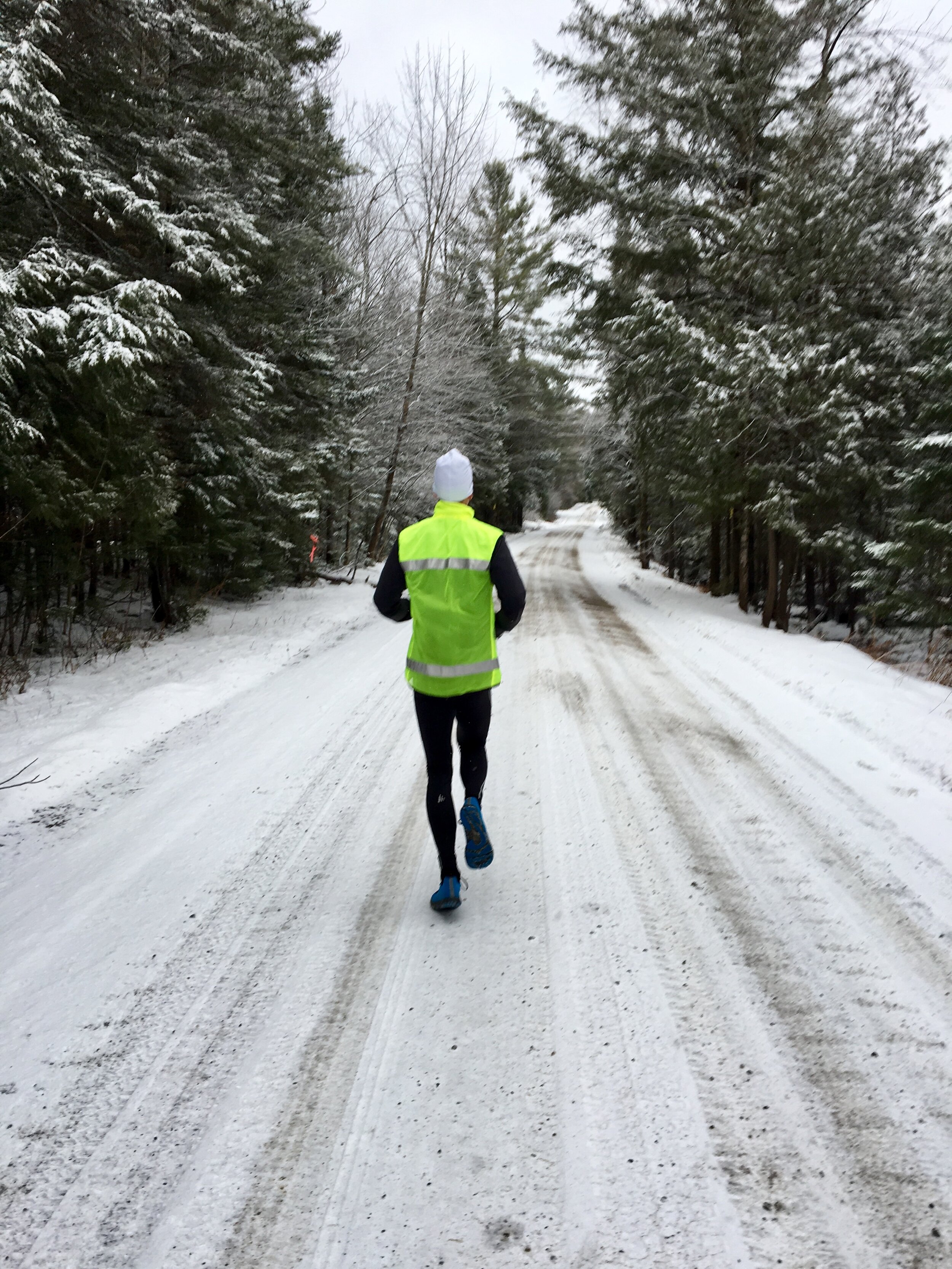Winter Running: Traction Talk
From Running Director Heidi Caldwell.
Winter running can get a bad rap in the ski-centric Craftsbury bubble. But during the low snow weeks or days when you don’t have time to drive to ski trails, keeping in touch with your running legs throughout the ski season can pay off big time. And for those training for a spring marathon, running through the winter is just part of the deal. Navigating the often slick roads of the Northeast Kingdom, however, is no small task, and requires intentional planning. First and foremost, this means finding the right equipment to keep you upright and running confidently through snowy and icy conditions.
So let’s talk about traction. There’s a lot out there these days, and it can be difficult to parse through what to choose. Here’s a round-up of my favorite winter traction strategies, with specified use cases for each option:
DIY Screw Shoes: Take a pair of your favorite running shoes, drill shallow sheet metal screws through the sole, and you’re good to go. In my experience, this is by far the most effective method for running on hard-packed snowy or icy roads; my screw shoes have seen me through many winter long runs and workouts. The biggest selling point for this method is that the screws “become one” with whatever shoe model you choose - no dealing with traction falling off mid-run or adjusting to a totally new shoe. It’s also the most affordable choice, but does require a bit more effort than some of the other options. For a how-to on making your own screw shoes, see our blog from last year here.
Kahtoola NANOspikes: This is my preferred brand of supplemental, over-shoe traction. I have found these to be more secure and durable than similar models by other brands, and an excellent choice for moderately icy or snowy road running. The lugs are sharp but shallow and wear out over time; depending on your mileage, they are worth replacing seasonally or every other year.
Yaktrax Run: The running-specific option from Yaktrax is definitely the model to choose if you want to go with the Yaktrax brand. This strap-on traction device is very similar to the Kahtoola Nanospikes, however I have found they wear out faster and break easily with regular or aggressive use. They also slip off your shoe more frequently while you are out running, which is a major nuisance. Overall, I’d say the Yak Trax Run model will work well for casual winter road running, but I would not recommend if you are looking to do uninterrupted intensity efforts.
Kahtoola MICROspikes: Whip out these powerhouses for your big mountain or trail adventures. Although on the pricier side, they are well worth the money if you plan to tackle anything with sections of thick, slick snow and ice. These make you feel like Spiderman (the grip is that good) but they are not fail-proof; you still need use caution in sketchy conditions. I would not recommend using these for paved or hard-packed roads, as the spikes are significant and will have nowhere to dig in on pavement, leading to foot and lower leg discomfort. If you are a hiking enthusiast planning to tackle any winter or shoulder season adventuring, these are an absolute must.
Icebugs (or the like): The least affordable option, and one I have not personally tested, this type of shoes have some wildly positive reviews. These function the same as the DIY screw shoes - the traction is built into the shoe itself. My main hesitation for this option is the fit of the shoe; if you have cranky feet or are super attached to specific shoe models, this may not be a worthwhile investment. But if you want to skip all the fuss, purchasing a winter specific shoe like this may be the way to go.
Even if you only plan to run sporadically throughout the winter season, having the proper grip is essential. I have had success using my MICROspikes for hiking or trail running in wintery conditions, my DIY screw shoes for most all of my road running, and my NANOspikes when I want to use a shoe that I have not built screws into. Whatever you choose, don’t skimp on traction - it’s an investment in your safety and gives you the freedom to cruise as desired!
Suit up, and run on!


